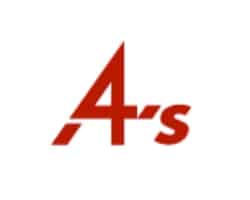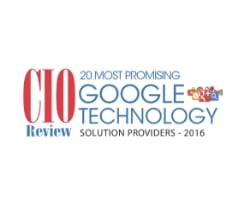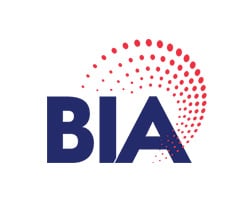In this episode, Linda Fanaras speaks with Jillian Derby, Senior Marketing Director at AIM HR Solutions, to discuss the often-overlooked synergy between HR and marketing departments in the B2B space. They explore how a unified approach can lead to better employee engagement, improved brand messaging and, ultimately, increased sales.
Thanks for listening to the B2B BRAND180 Strategy podcast with Linda Fanaras, CEO/Strategist at Millennium Agency.
You can follow Linda on LinkedIn at https://www.linkedin.com/in/lindafanaras/ and Millennium agency at https://www.linkedin.com/company/millagency/.
Linda Fanaras: 0:00
Hi, I am Linda Fanaras, host of B2B Brand 180 and CEO of Millennium Agency. If you want to transform your B2B marketing into a powerhouse brand, then you may want to listen in. And if you like what you heard today, click like, share or subscribe. Well, there is no doubt that corporations are finding it more challenging to deal with today’s HR issues, whether employees are faced with aging parents and young children, maybe they live in a stressed-out environment at home, or they’re just considering that silent. Resignation that we keep hearing about, it seeps right into the workplace and there’s no chance to actually avoid this. So this, along with the corporate culture and internal support system, can make an employee just dissatisfied with their job. How do you deal with that as a corporate leader? And what does all that have to do with branding and messaging? Well, that’s why I’ve brought in Jillian Derby today, senior Marketing Director from AIM HR Solutions. AIM HR Solutions is a subsidiary of Associated Industries of Massachusetts called AIM as We Know It, which is an employer network of trusted advisors, advocates, and thought leaders from talent management, training and compliance to compensation and analysis and online services. AIM HR Solutions is dedicated to helping organizations thrive through customized tools, training and support. And today we’re gonna talk about strategies to. Gauge your employees, make them feel supported in their work environment, and bring them a sense of peace in mind through strategies that you may not even consider. So welcome Jillian Derby, senior Marketing Director from AIM HR Solutions to the B2B Brand 180 podcast. So thanks for joining me today. Jillian, thanks for having me. Absolutely. So why don’t we start out with a quick introduction about yourself. Do you mind taking a couple minutes and tell us a little bit about yourself and AIM HR
Jillian Derby: 2:02
Sure. So I’m a B2B marketing professional here at AMR Solutions. I have a little bit less than 20 years experience in marketing and all of that has been in the B2B space. So I’m excited to be joining you here today talking about that very subject. And so I’ve been at AMR Solutions for about. Seven years now. And what I really love about the position and the company is that there is this overlap between marketing and hr. They’re both concerned about making sure you’re. Message is out there, but one is an internal message and one is an external message. And so I like to think of marketing and HR as two peas in a par pod, but with different audiences. Marketing is all about making your company look good to your customers while HR is making sure the company looks good to its own employees and potential new hires. But either way, they’re both working to make sure the company’s seen the best possible light. So I love what I do. I love AM h r and I love marketing. So, I feel like I’ve found my niche. I found my spot. Yeah,
Linda Fanaras: 3:02
That’s a great point that you make about HR and marketing because I think a lot of professionals in either one of those industries looks at them as separate entities and because they do have separate purposes but when you really do look at that a little bit deeper, you realize how interconnected they really are and marketing can positively impact hr, and HR can positively impact marketing. So there’s a great synergy there. So we’re always talking about coaching and mentoring and just being a solid leader, but what I’d love to talk about today are some key strategies to strengthen the connection with employees and how that benefits customers.
Jillian Derby: 3:38
Yeah, so it’s really important that companies have values and missions and that they’re clearly communicated both internally and externally, and that will help make sure that everybody’s on the same page and speaking the same language when they’re talking to. Prospects and clients alike. And by doing this, you’re really helping create a sense of purpose and direction for your employees and inspiring them to become, your own corp internal cheerleaders. And it’s also important that companies and I think am h r and Aim do a great job of this, is create a culture of recognition and reward People will just feel appreciated and in turn they’re gonna become mutual leaders, but really having that set of core values and missions and. Having that live throughout your organization and the way that you message to your clients and the way that you talk internally and really all aspects, of your, branding is really important. And, I would say to create a culture of cheerleaders, just lead by example, be positive, be a team player. They say that positivity spreads, right? And so by having that, Attitude in putting that out there, you’re really gonna create a buzz. You’re gonna create an environment where people wanna be. And so if you don’t have your missions and values already, Embedded in your, workplace. It’s really, that’s the first step. And I think that then kind of trickles down
Linda Fanaras: 5:04
from there. I think being a positive cheerleader within the company and actually being a good leader can make a huge difference. Leaders get burnt out and sometimes it’s hard to be positive all the time. I mean, what are some of the recommendations that you have to our audience today about. How do you overcome some of the things that get you down during the course of the day that, that you need to make sure you stay positive for your staff?
Jillian Derby: 5:31
Well, I think before, anything else, I think it’s okay to not always be positive and I think it’s about being transparent and being authentic. If. You don’t show that there, you have struggles. Your employees are not gonna feel like they relate to you. Right? So I think that’s my first, piece of advice is be transparent, be honest about the challenges you have as an organization. But you don’t wanna be a Debbie Downer, right? So you gotta balance it. But I think it’s really about creating a culture where people feel valued. And I think that goes back to having your company’s core missions and values, outlined as a marketing professional, I know how important it is to have a clear brand identity that resonates with customers. But you gotta do the same for your employees. one way to do this maybe by involving your mm-hmm. Employees in the messaging, making them feel like they’re part of it. Uh, we do a, I think we do a good job here at am h r of talking to our own internal employees to say, what are you hearing from customers? What are their pain points and how do you feel about that? And really I think them being part of that message and being part of. Putting that together really helps them feel like their voices are being heard. And then also communicate those values mm-hmm. Admissions and do it regularly. It’s one thing to have, uh, corporate mission and values in your handbook and have it on your website, but if you’re not communicating that regularly and showing ways to live up to those corporate. Mission and values, then, people are gonna forget. They’re not gonna know. I, I mean, how many companies do you think are out there that people just, what are values are because it’s not lived, it’s not, they’re, they’re not feeling that. And so, you can think of ways to infuse those values and bring it back to that. Uh, I think that’s impactful. one way that we do that too is in our performance reviews. Mm-hmm. We have to align it with how we demonstrate some of the aim values. I, I think that’s a nice way to always bring it back home, but there’s other ways that you can do that as well. Yeah, and I
Linda Fanaras: 7:31
find it so interesting because when we do meet with companies when it comes to branding and building out the brand story and, and strategy and messaging around that, that how many companies actually do not have a set of core values, and they’re unsure about what their real mission and vision is, and. Maybe they have a culture, but not really, it’s not a, it’s not a core culture that they live by. So when they start to go through that exercise of determining, okay, what is our mission? What is our vision? What are our core values? And how does that benefit, us as an organization and how does that benefit our employees? It’s really impressive how that can take shape. And then obviously get implemented into the corporate culture in a way that gets people really excited about it and makes them feel like they’re part of something bigger and something way more important. So taking something as simple as your core values, your mission, your vision. And, and bundle that up into something that gets pushed into the company culture in a positive way can make a huge, huge difference. for any organization. We see it time and time again. Yeah. And I’m sure you
Jillian Derby: 8:41
have too. Yes. And it’s one thing if your website says, a bunch of stuff externally, and then internally you have a totally different vibe that’s gonna. Throw things off as well. Right. So it’s, it’s really about just making sure that all the dots are connected. Everybody feels on board, everybody feels like they’re aware of what those values are and living it.
Linda Fanaras: 9:05
Yeah. They have to live it every day. They do. The question I did wanna ask you though, because our clients always ask, how can we just persuade more people to buy what we sell? and what does that have to do with hr? how does that all tie in? Because I don’t understand how HR and, marketing tie together. And I know we talked about it briefly on the front end, but I’d love to get your sort of deep dive into that question
Jillian Derby: 9:27
so many companies are focused on what you just said, right? How do I sell to people? But they’re not thinking about how they sell to their internal. Constituents, they’re internal folks. Your first customer is your employees. And if they’re happy and they understand what they’re trying to do, and they’re part of this brand, and like we were saying, living it, right, they’re gonna become your cheerleaders and they’re gonna help you sell. And so how does this tie into hr? It’s really about. Thinking about your employees as advocates for your brand and making sure they’re part of the marketing message, that they help to create that message and keeping them engaged. Because if they’re not engaged with you, they’re not gonna feel like they know what’s happening and they’re not gonna. Go to bat for you, so to speak. But if you think about everyone from your, highest level executives, all the way down to the people who, interact with your customers in the day-to-day, so clerks at your shop or whatever they all have friends and family and they all have networks. They go to cookouts. when you meet someone for the first time, Hey, what do you do? Mm-hmm. And if they can’t articulate that and they can’t. Speak to what your business does, it’s a missed opportunity. And that’s how you get people to sell, right? Is you make them aware. You make them part of the company, you make them part of the culture, and you do that through things. Training and development, having conversations with them, recognizing and rewarding them. But a in HR can do all that. So that’s kind of how HR fits into that. And I think marketing and hr, are in sync when it comes to those and they really need to. Mm-hmm. Work together and chat together. Yeah,
Linda Fanaras: 11:07
and the other thing that we find too is building out that messaging and corporate strategy can’t necessarily start from the marketing or the HR department. It has to start with leadership because it’s that leadership. Mentality that will help push it through the company and make sure, because if you don’t have buy-in on the top level, you’re surely not gonna get buy-in on the middle and the bottom levels of the company. So it’s important to make sure that that leadership team is part of that process as well. To your point, also getting key employees tied into that to make sure they feel like they’re participating in that process. So as far as getting your employees to become brand advocates, how do you do that? How do you get them to be excited about the corporate brand and making it real for them and making it real for the employees that, that are part of that company?
Jillian Derby: 12:01
Honestly, I think it’s about just building a place that people wanna be at if people feel good about showing up to work every day they’re, it, that’s how, they’re, no one’s gonna wanna be a brand advocate for a company that they don’t feel passionate about, that they don’t feel invigorate some and gets them excited, every day. And of course, it’s work for some people, right? You show up and it is what it is, but. By getting people on board. You host team building events. You help build that relationship between the company and the individual and the individuals at the company together. Just say, Hey, these we’re, we’re working towards the same goals. And so training is a big piece of that. We do training here at am h r for things like mindful leaders and we do a lot of unconscious bias training, things like that. Things that help. Make us all aware of how we come off and making us feel like we’re all trying our best. So I think training is a big piece mm-hmm. Of building that strategy and building that culture that makes people, brand advocates. And then again, going back to the mission and the values and infusing that and any way you can,
Linda Fanaras: 13:07
Yeah, I like the training piece because I think there are a lot of things that companies can do to build a strong culture, and that’s one, a, a lot of companies will do sponsorships where there’s team building or they’re running together or doing a 5K together. And, and then, I think the training thing’s fantastic because I think anything that allows an employee or a staff member to improve their skillset, It’s something that they appreciate.
Jillian Derby: 13:32
Yeah. And I think it’s also, when we talk about having that open door policy and people feeling like, being transparent and honest leaders it means that people can come to you with feedback. And they can share what they’re feeling and what they’re hearing from customers but then also acting on that feedback. Right? I mean, there’s nothing more annoying than filling out a safer company and giving honest feedback, and then nothing ever changes, right? Right. So if you’re gonna open that door, if you’re gonna say we care about what you think and we wanna hear from you, and we wanna have this back and forth relationship too, you have to be willing to act on certain things and communicate and just be aware that that, if you ask them, be willing to. Move forward as well.
Linda Fanaras: 14:14
If you were to give a company some tips on building out a brand ambassador program and, and I think some people don’t exactly even know what that means, what would be your recommendations?
Jillian Derby: 14:25
Sure. So I think it’s building an internal committee of, everyone that would be part of being a, what a brand ambassador is. And it’s every employee is a brand ambassador, so how can they talk to people? Sharing, training again on a regular basis, making sure people know about the mission and values. Creating internal communication tools as well that help people. So we at Aim have something not just a newsletter, but we do this video called Three Things in Three Minutes. Mm-hmm. And so we really try to connect with people cuz people tired of reading emails in this virtual world in a different medium. And so it’s something that all of our team members look forward to getting. But engaging as many of your employees as possible and helping that internal will help build brand ambassadors. And you can call that a program, but it’s really just about being strategic about it, communicating with them. Providing the training where they feel like they need it, making sure they’re aware of mission and values, and then communication overload is really how you, yeah.
Linda Fanaras: 15:27
Are you, are you asking them to be an ambassador or are you just hoping that? You’re building a set of advocates within the company that would in turn become ambassadors.
Jillian Derby: 15:38
I, I think it’s a little bit of the latter, right? And, but being forward with them that we’re all brand ambassadors. We all wear this hat. Because any experience somebody outside of the company has, with someone in your company represent your brand. Right? So. Even though Joe in accounting talks to a vendor and he may not feel like he’s a brand ambassador, if he has a bad relationship with his vendors or something like that that reflects on the brand. Your brand is everything. Right? It’s not just your logo, it’s not just your website. It’s not just marketing, it’s everyone and everything associated with that brand, so, right. I think it’s, again, it’s just being strategic about. What your brand is, who your employees are, and getting them all on board. You might have people who are not gonna be these big cheerleaders and always say wonderful things about your right company, but at least knowing that they’re part of your story and keeping them up dated
Linda Fanaras: 16:37
know? So, if you were to talk about some key points for our audience today relating to, HR and how important it is in tying that all into marketing, what would be your summary to the audience today?
Jillian Derby: 16:50
Marketing, talk to your HR people and HR people. Talk to your marketing people. There’s a lot of synergy and there’s a lot of ways that they can work together to reap the benefits of, just chatting with each other. But I, especially in today’s market, when we have five generations, In the workplace, you gotta be creative in how you reach out to your, prospects, customers, and employees. It’s different mediums. It’s different, everything’s different. So talk to each other. Don’t be afraid to have these conversations and, utilize each other as a tool in the toolbox to really. Driving employee advocacy in making your employees your big cheerleaders.
Linda Fanaras: 17:32
Yeah, and I think that’s a great point because I think tying those two divisions and departments together and building out a strategy for employees and customers, Can really elevate you as a company. And I think that that is one area that maybe companies don’t take as seriously as they should. So, yeah. that’s a great help. Well, well that was, that was fantastic. So thank you for listening in today and on behalf of B2B Brand 180 again. Thank you, Jillian. She’s a senior marketing director at a HR solutions. She provided some great insight on HR leadership, building those communities and advocacy programs and making sure you have that brand and messaging strategy that’s built from the inside out and to visit aim. It’s Aim HR solutions.com. And again, I’m Linda Fanaras, host of B2B Brand 180 and c e o of Millennium Agency. And just to help our channel grow and educate more B2B leaders on brand strategies. Feel free to click, like share or subscribe or visit m I L l.agency. Thank you.





























